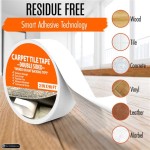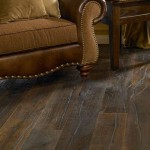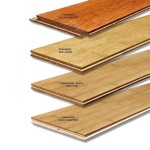Is It Difficult To Remove Laminate Flooring?
Laminate flooring, a popular choice for its durability and affordability, can sometimes require removal for various reasons. Whether you're undertaking a renovation, replacing the flooring, or simply want to explore a new look, the question arises: is removing laminate flooring a daunting task? The answer depends on several factors, including the installation method, the condition of the flooring, and your DIY skills.
While laminate flooring removal can be challenging, it's not an insurmountable task. With the right approach, tools, and patience, you can successfully remove your laminate flooring. This article will delve into the factors influencing the difficulty of removal, explore the necessary steps, and provide insights into making the process easier and more efficient.
Factors Influencing Difficulty
Several factors contribute to the complexity of laminate flooring removal, making some installations easier to dismantle than others.
1. Installation Method
The method used to install the laminate flooring significantly impacts its removal. Laminate flooring can be installed using various methods, including:
- Floating Installation: In this method, the planks are not glued or nailed down but rather interlocked and rest on a moisture barrier. This method makes removal relatively straightforward, as the planks can be easily lifted and separated.
- Glue-Down Installation: This method involves attaching the planks to the subfloor using adhesive. Removing glued-down laminate flooring is more challenging, as it often requires careful prying and the application of heat to loosen the adhesive bond.
- Nail-Down Installation: In this method, the planks are secured to the subfloor using nails or staples. Removal involves carefully prying up the planks and removing the fasteners, which can be time-consuming and require specialized tools.
2. Floor Condition
The condition of the laminate flooring also plays a role in removal difficulty. Damaged or worn-out planks are often more challenging to remove, particularly if they are glued down or nailed down. The age of the flooring can also affect its removability, as older installations may have more firmly adhered adhesive or challenging fasteners.
3. Subfloor Integrity
The condition of the subfloor beneath the laminate flooring can influence the removal process. If the subfloor is uneven, damaged, or warped, it can make removing the laminate flooring more difficult and potentially damage the subfloor during removal.
Steps for Removing Laminate Flooring
Removing laminate flooring involves a series of steps, each requiring specific tools and techniques. The following steps outline a general process:
1. Prepare the Work Area
Before starting the removal process, clear the area around the laminate flooring. Remove all furniture, fixtures, and personal belongings. Ensure adequate lighting and ventilation, and wear safety gear, such as gloves and eye protection.
2. Identify the Installation Method
Determine how the laminate flooring was installed. Look for any visible adhesives, nails, or staples. This information will guide your removal approach.
3. Start from the Edge
Begin removing the laminate flooring from a corner or edge of the room. Gently pry up the first plank using a pry bar or a utility knife. Be careful not to damage the subfloor.
4. Separate the Planks
Once the first plank is loose, carefully remove the remaining planks by prying them up and separating them from the next plank. Use a pry bar or a utility knife to lift the planks, working your way across the room.
5. Remove Glue or Fasteners
For glued-down or nailed-down laminate flooring, remove the glue or fasteners as you progress. For glued-down flooring, use a heat gun to soften the adhesive bond, making it easier to remove the planks. For nailed-down flooring, use a nail puller or pry bar to remove the fasteners.
6. Clean Up
Once the laminate flooring is removed, clean the subfloor thoroughly. Remove any remaining adhesives, staples, or debris. Vacuum the subfloor to remove any dust or particles.
Tips for Easier Removal
Several tips can make removing laminate flooring easier and more efficient:
1. Use the Right Tools
Employ appropriate tools for the job. A pry bar with a rubber tip to protect the subfloor, a utility knife, a heat gun for softening adhesive, and a nail puller are essential tools for laminate flooring removal.
2. Work in Sections
Remove the laminate flooring in manageable sections to avoid unnecessary stress on the subfloor and make the process less overwhelming.
3. Be Patient and Careful
Removing laminate flooring can be time-consuming, especially for glued-down or nailed-down installations. Exercise patience and care to avoid damaging the subfloor or injuring yourself.

The Easiest Way To Remove Laminate Flooring

How Do I Remove Laminate Flooring Factory Direct

10 Steps To Remove Laminate Flooring Home Improvement

How Do I Remove Laminate Flooring Factory Direct

Dismantling Home Laminate Flooring In Singapore When To Remove And How Replace It

How To Remove Laminate Flooring Budget Dumpster

How To Remove Laminate Flooring The Home

How To Remove Laminate Flooring Bob Vila

How To Effectively Remove Laminate Flooring Commercial Suppliers Supplies
How To Remove Laminate Flooring In 6 Easy Steps
See Also







